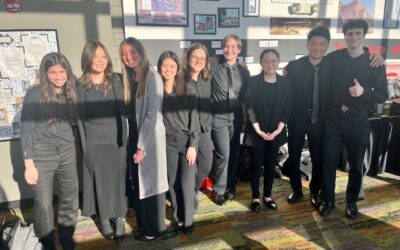By Nicole Bucka
The views expressed here are my own and are not an official communication from the East Greenwich School Committee.
Next week, on Feb. 14, is the second Joint Meeting of the East Greenwich Town Council and School Committee in our annual budget process. As a resident in a modest income category with a disabled/life-long dependent to care for, I know the impact taxes can have on the quality of life for more vulnerable citizens. I trust our town manager and Town Council with this immense responsibility and thank them for their service. On the school side, I want to applaud Mrs. Meyer and Mrs. Baker with transparent and understandable fiscal reporting throughout our School Committee meetings, but I know most residents aren’t able to attend those long and frequent meetings and as a result, some narratives persist in the community that I would like to clarify as inaccurate.
Misconception: Our school district received millions in COVID relief funds.
Reality: Many districts did receive millions in COVID relief, but ours did not. While East Greenwich schools had many COVID related costs to ensure our children’s safety, we received the lowest amount of COVID relief funds of any K-12 district in the state. The only districts that received less than us are Foster – one elementary school with 208 students, and New Shoreham – one school with 148 students. This is because COVID education funds were allocated based on the number of students a district has that are from low-income families. In East Greenwich, only 5 percent of our students are from low-income families (RIDE Report Card 2021 retrieved from https://reportcard.ride.ri.gov/202021/DistrictSnapshot?DistCode=09).
Normally, I support giving more funding to populations with more need, but in this case, I disagree with using this metric to allocate COVID relief dollars. Whether your students come from low-income families or not, COVID still requires extra custodial services for every building, outdoor tent rentals for every building, extra staff on each bus, more buses for transporting safely within social distancing requirements, PPE, partitions, fans, storage containers to make space for distancing in overcrowded buildings, etc. When asked in December, the district quickly identified $463,000 in those more facilities-type costs entirely due to COVID. Those are expenses that are above and beyond standard operational expenses and because our school district is majority locally funded (state share ratio of 9.7 percent, source p. 89), this means a lack of COVID relief dollars is/will have to be absorbed at the local level.
We (several members of the School Committee) have communicated this reality to our legislators and are also actively supporting legislation that could help (e.g. Rep. McNamara and Medicaid funds for mental health- related needs).
And those are the incurred/known costs of the pandemic so far. We still have many unprecedented unknowns yet to play out: some of our more vulnerable students regressed significantly during this time requiring more intensive services, more students than every require social-emotional and mental health supports, and the obvious call for tutoring/ongoing learning support. It’s like a meteor hit public education, and we have to be prepared to handle this in addition to what we managed before.
Our municipality/town is set to receive $3.9 million dollars in American Rescue Plan funds. Those funds are to go to needed infrastructure projects in our town’s other departments. These are difficult decisions in difficult times and there simply isn’t enough to go around, so I am not questioning that decision. I only want to communicate what was already shared publicly – those funds will not be addressing school district infrastructure needs.
Misconception: The school system inflates your taxes.
Reality: We know that the school district has a huge impact on our community as COVID has magnified, and it does not have a large impact on our tax rate. At last year’s Joint Meeting, Dr. Eugene Quinn, a statistical analyst and School Committee member, demonstrated that our tax rate variability is in fact the result of real estate fluctuations and revaluations, not the cost of the school district and related change year-to-year (source).
This misconception exists because the school district is a larger portion of the town’s budget than the other departments, but that is logical and expected; budgets are primarily personnel costs (salaries and benefits) with facilities costs being the next big bucket. The school district has more personnel than all other municipal departments combined. When comparing our school department to the other town departments, the schools have the most personnel, more buildings/facilities to upkeep, and its own infrastructure (e.g, Human Resources, Finance, Technology) whereas the other departments utilize the town’s infrastructure more so. As far as benefits, in both the Joint Meeting May 2018 and then again in School Committee’s Financial Audit of 2018, the school district’s union contracts were described as lean. Then Town Manager Corrigan also noted pension liability on the school side was relatively light because police and fire had lifetime health and dental coverage whereas the teachers only received two years. I do not want to reopen old wounds. I only wish to reiterate that our school district is fiscally responsible and that this has been repeatedly shared in open meetings.
If we look at comparable school districts (similar numbers and demographics of students served, similar state funding for education, similar number of buildings for facilities costs and to a lesser degree – tax base), we are most like Smithfield and Portsmouth. In comparing our annual costs to theirs, we look almost identical, and we have more buildings, so slightly higher would be expected. In fact, those communities’ town expenses by department also look almost identical to ours when comparing the annual financial reports. Our school district is not over-spending and it is not inflating taxes.
So why am I taking the time to share this? Our students, families, and school staff have endured so much in the last couple of years, and every day, they still make extraordinary things happen in those buildings. People, staff as well as families, are burnt out and I feel we need to be sensitive to that. Please attend our joint budget meetings to get the facts/ask your questions and hold all of us to the expectation of a positive and productive budget season without the tit for tat that can sometimes ensue. We have met a lot of challenges and have much more to come, so let’s preserve our energy and work together.
Nicole Bucka is a member of the East Greenwich School Committee.





 Subscribe
Subscribe
Margaret Baker, MBA is a member of RI Association of School Business Officers. This is a marker of professionalism and sophistication in financial management . For several years EG was not represented on RIASBO. It is the counterpart to the Government Finance Officers of America.
I am very pleased to see that we have a professional finance director on the school side.